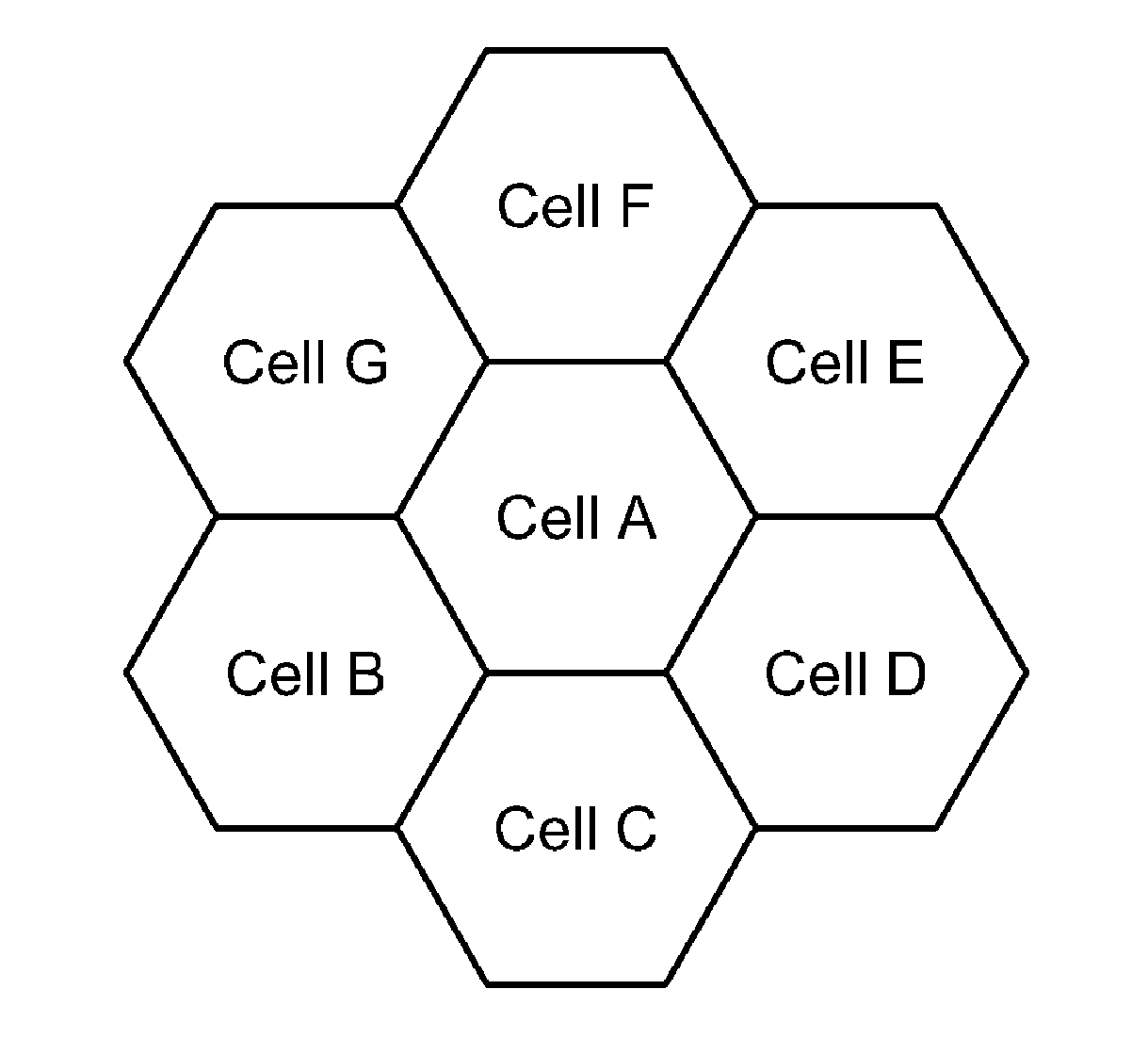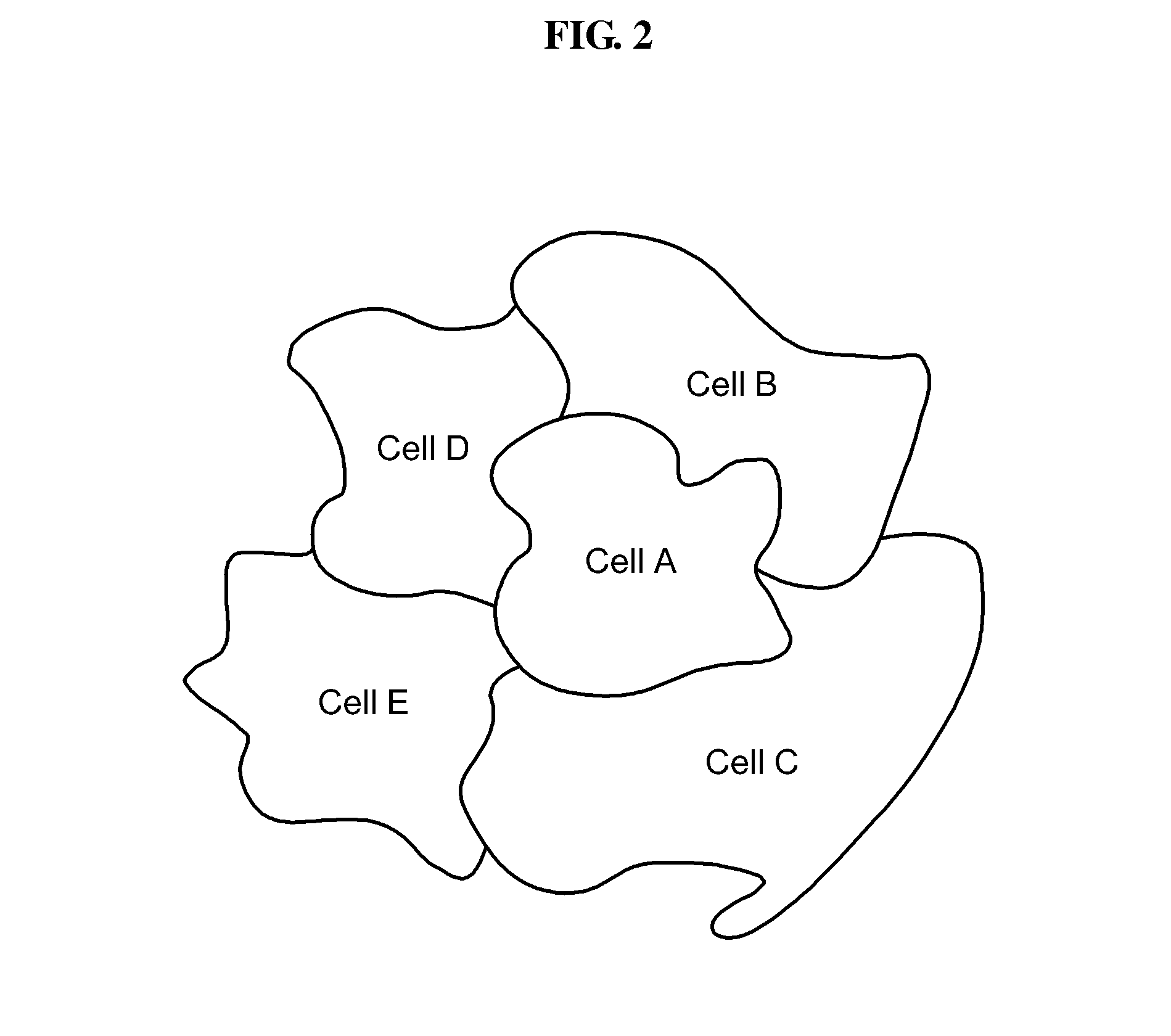Method for inter-cell interference management in cellular system
a technology of inter-cell interference and cellular system, which is applied in power management, electrical equipment, radio transmission, etc., can solve the problems of handling interference between adjacent cells, affecting system performance, and affecting the performance of the system, so as to avoid interference, reduce interference, and reduce the effect of transmission power
- Summary
- Abstract
- Description
- Claims
- Application Information
AI Technical Summary
Benefits of technology
Problems solved by technology
Method used
Image
Examples
Embodiment Construction
a channel state of still another cell in FIG. 1;
[0033]FIG. 8 is a flowchart illustrating a method for inter-cell interference management without a cell planning according to example embodiments;
[0034]FIG. 9 illustrates transmission power assignment patterns 0, 3, 6, and 12 in a case of G=5 and F=1;
[0035]FIG. 10 is a flowchart illustrating a method for inter-cell interference management without a cell planning according to other example embodiments;
[0036]FIG. 11 illustrates a channel state of each cell in which transmission power assignment patterns are used in a cellular system according to example embodiments; and
[0037]FIG. 12 illustrates a channel state of each cell in a case of using a method for inter-cell interference management according to other example embodiments.
BEST MODE FOR CARRYING OUT THE INVENTION
[0038]Reference will now be made in detail to embodiments of the present invention, examples of which are illustrated in the accompanying drawings, wherein like reference num...
PUM
 Login to View More
Login to View More Abstract
Description
Claims
Application Information
 Login to View More
Login to View More - R&D
- Intellectual Property
- Life Sciences
- Materials
- Tech Scout
- Unparalleled Data Quality
- Higher Quality Content
- 60% Fewer Hallucinations
Browse by: Latest US Patents, China's latest patents, Technical Efficacy Thesaurus, Application Domain, Technology Topic, Popular Technical Reports.
© 2025 PatSnap. All rights reserved.Legal|Privacy policy|Modern Slavery Act Transparency Statement|Sitemap|About US| Contact US: help@patsnap.com



